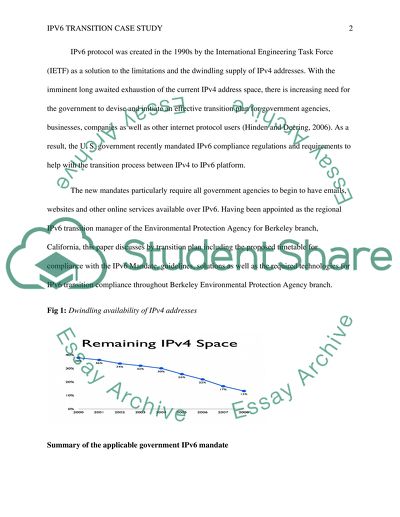Cite this document
(“IPv6 transition Case Study Example | Topics and Well Written Essays - 1250 words”, n.d.)
Retrieved from https://studentshare.org/information-technology/1496927-ipv6-transition-case-study
Retrieved from https://studentshare.org/information-technology/1496927-ipv6-transition-case-study
(IPv6 Transition Case Study Example | Topics and Well Written Essays - 1250 Words)
https://studentshare.org/information-technology/1496927-ipv6-transition-case-study.
https://studentshare.org/information-technology/1496927-ipv6-transition-case-study.
“IPv6 Transition Case Study Example | Topics and Well Written Essays - 1250 Words”, n.d. https://studentshare.org/information-technology/1496927-ipv6-transition-case-study.


